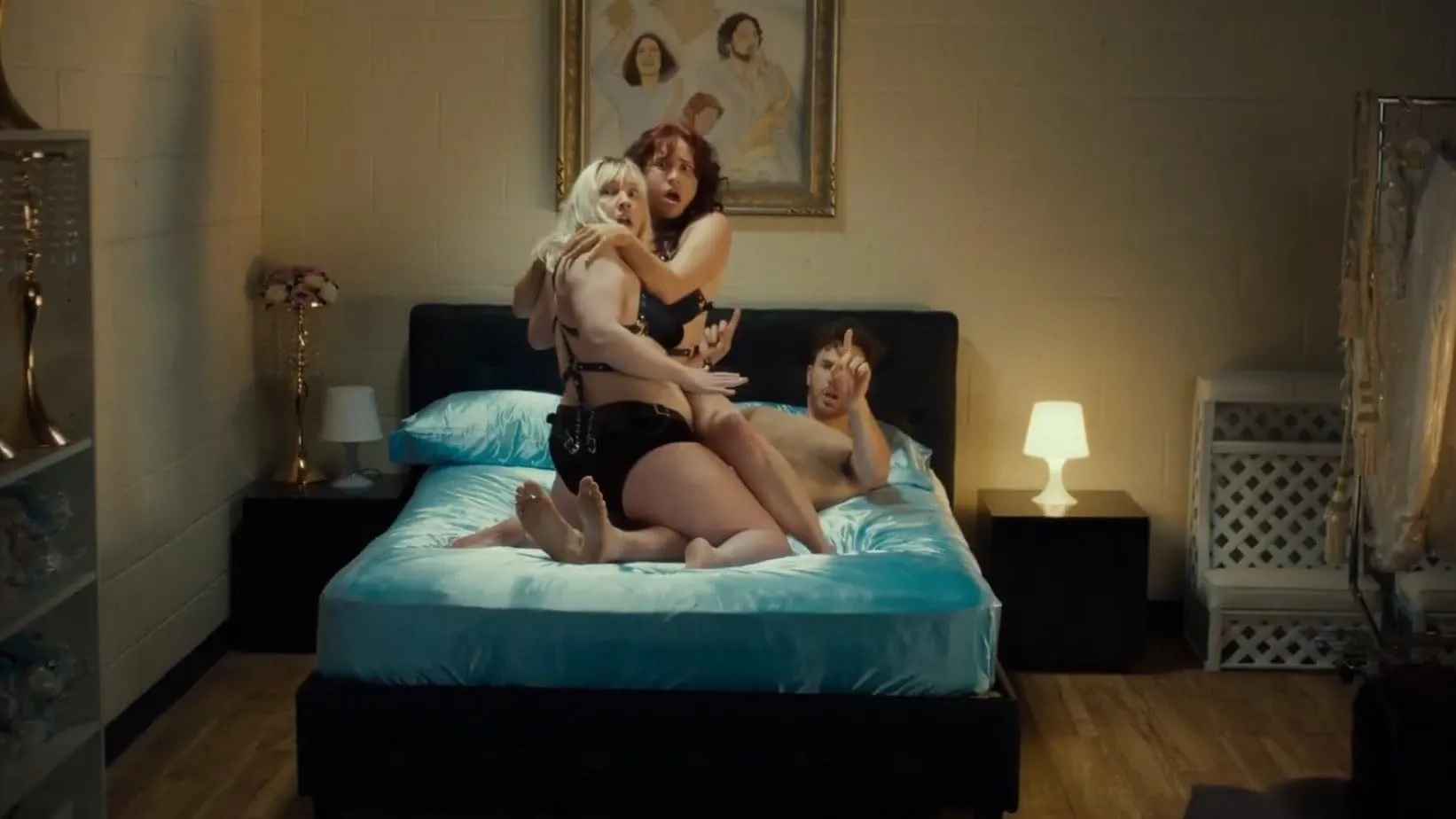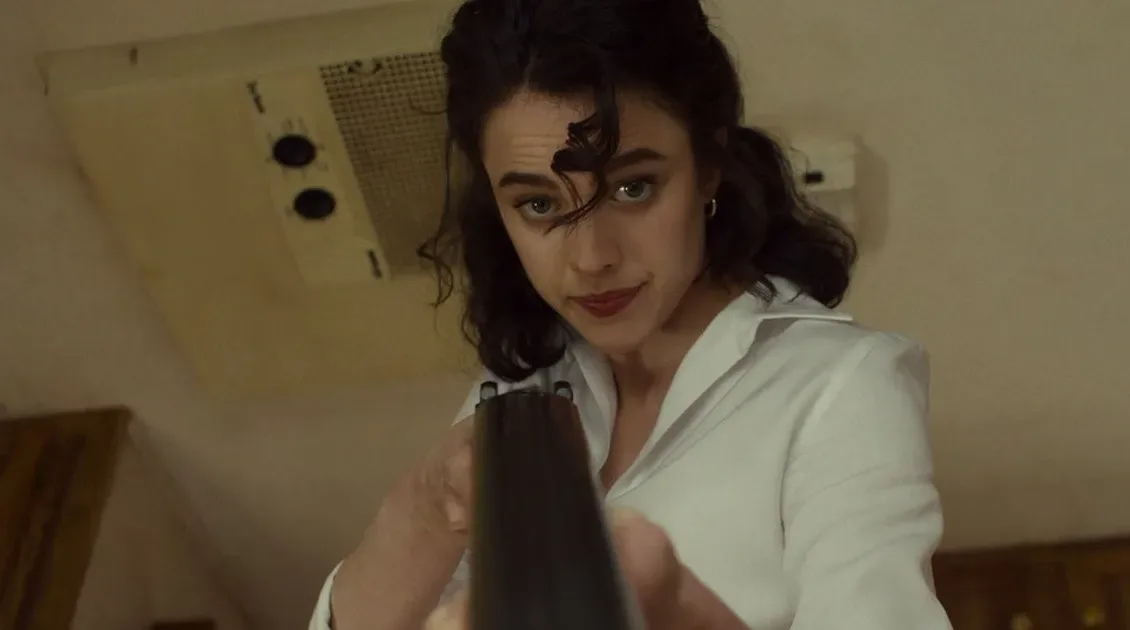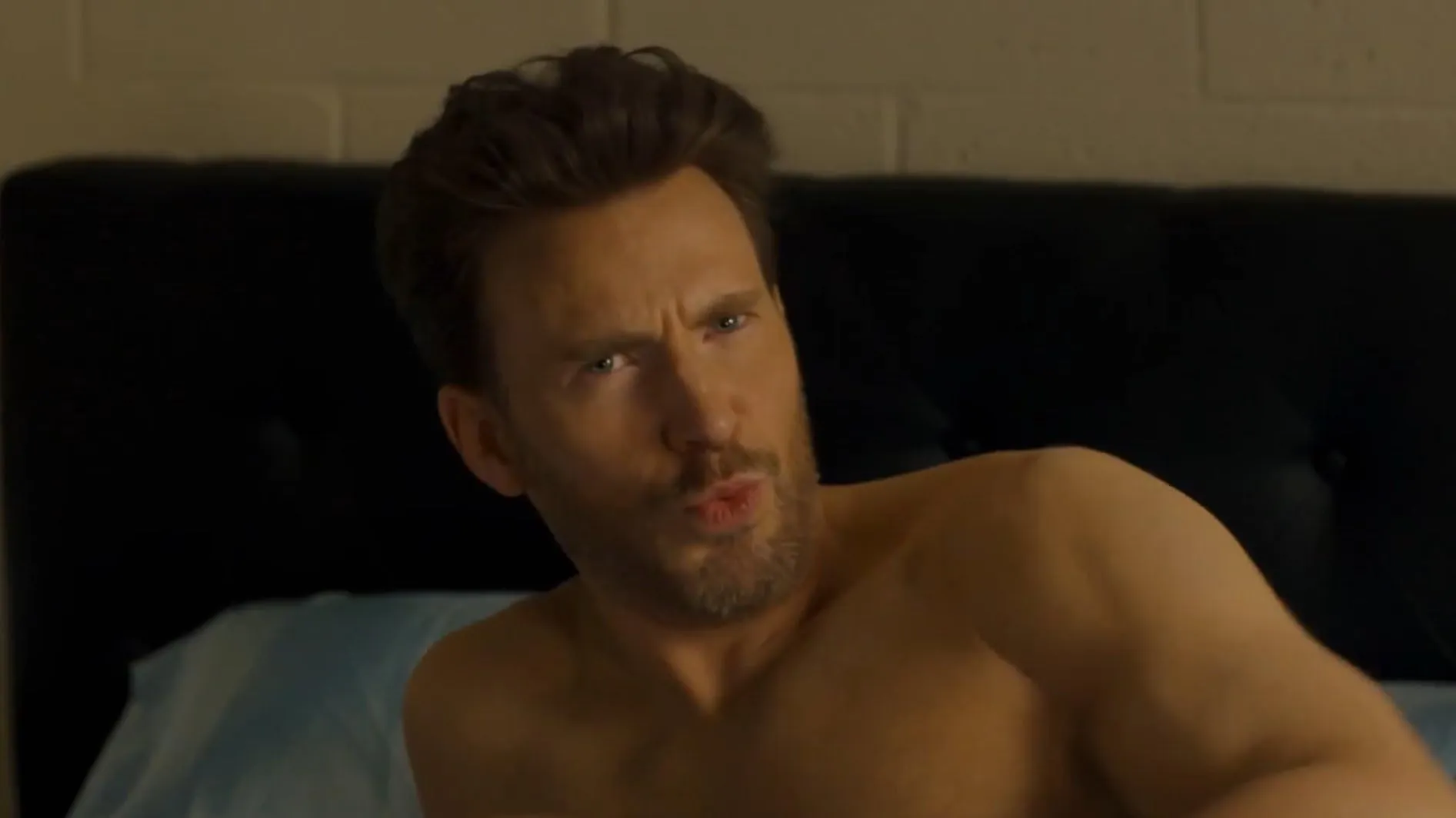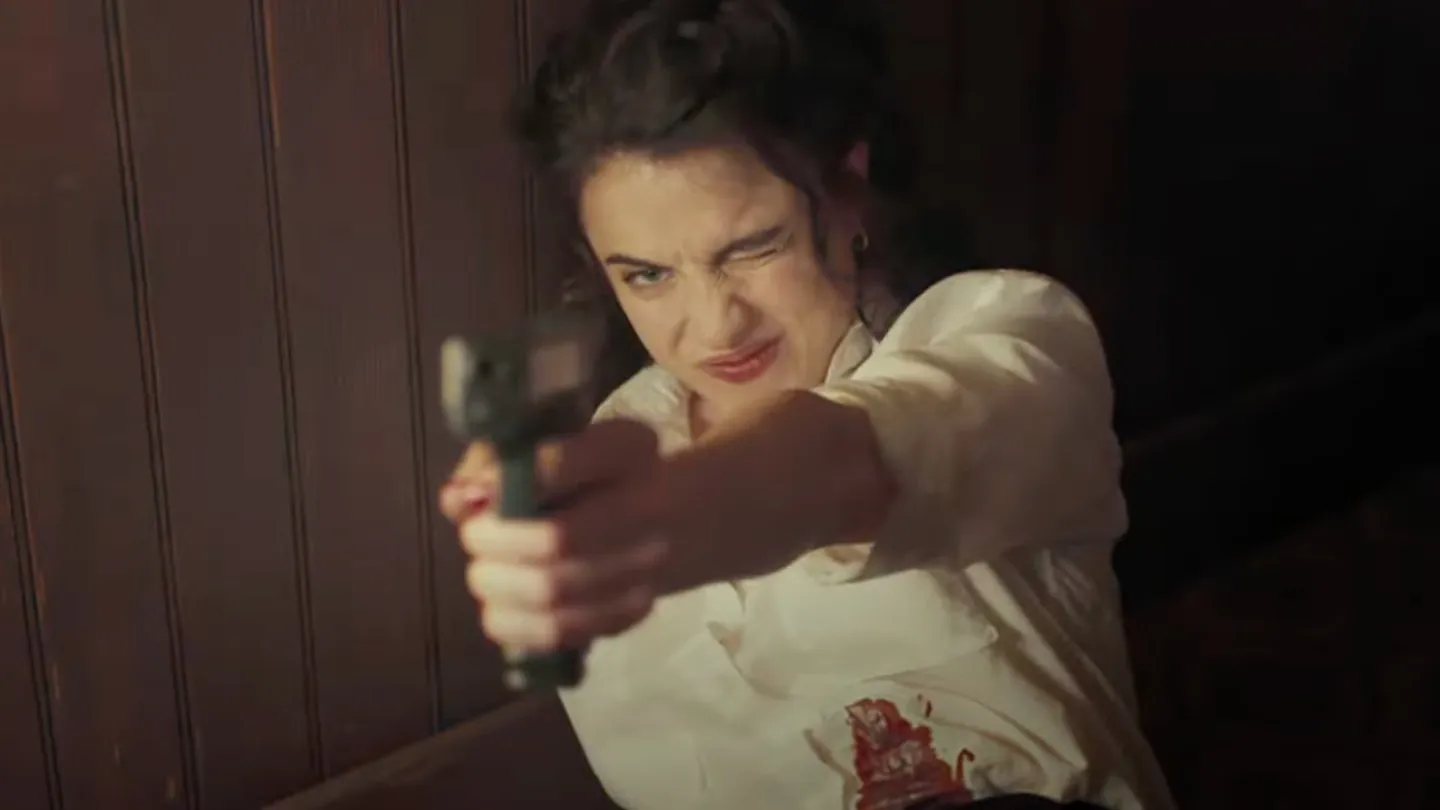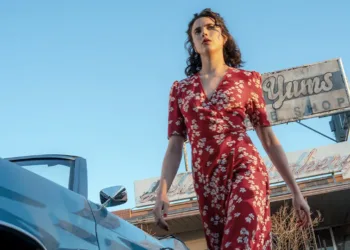Honey O’Donahue, a no-nonsense private eye in sun-baked Bakersfield, digs into what appears to be a routine car accident—only to uncover a web of religious corruption, drug trafficking, and personal stakes that pull her deeper into peril.
Ethan Coen’s solo foray blends the visual trappings of classic noir—dusty desert vistas, vintage automobiles, sharp hats—with a tongue-in-cheek sensibility reminiscent of grindhouse thrillers. The film oscillates between languid, character-driven scenes and abrupt jolts of violence, underpinned by a rockabilly-tinged score that keeps the narrative buoyant. Coen and co-writer Tricia Cooke favor carefully measured dialogue rhythms: a moment of pregnant silence can carry as much weight as a punchy one-liner.
At the center of the unfolding mystery is Margaret Qualley’s Honey, whose steely calm and flickers of vulnerability anchor every twist. Qualley calibrates her performance with razor-sharp precision—her measured pauses convey suspicion as effectively as any camera angle, and her chemistry with Aubrey Plaza’s equally self-possessed cop injects genuine warmth into the procedural. It’s a study in how a single magnetic performance can elevate a familiar detective framework into something that feels simultaneously fresh and comfortably retro.
Setting & Atmosphere
Ethan Coen positions Bakersfield as more than backdrop—it’s a character in miniature. Sun-bleached streets stretch wide under a flat, merciless sky, dotted with neon-outlined diners whose peeling paint hints at faded dreams. Every shot lingers on crumbling billboards and rusted oil rigs, reinforcing a sense of decay that undercuts Honey’s relentless cool. Yet the town feels lived-in: you can almost smell the grease from late-night grills or hear the distant hum of freeway traffic.
This era-blurring choice—Honey’s vintage turquoise Chevy and desk-bound rolodex alongside the odd cell phone—creates a deliberate temporal dissonance. It signals homage to 1950s pulp without fully committing, inviting us to inhabit a parallel present where analog romance mingles with modern urgency.
Visually and tonally, the film riffs on noir conventions: long shadows slice open desert highways, and Qualley’s silhouette against a dusty horizon evokes classic femme fatales. But Coen spices the palette with B-movie flourishes—exaggerated close-ups, sudden bursts of lurid color, and a near-grindhouse energy that keeps the viewer alert for the next unexpected turn.
Pacing mirrors this duality. Moments of relaxed stake-outs let us savor Honey’s razor-sharp observations, only to be jolted by abrupt violence or pulsing guitar riffs. A lean rockabilly score threads through these shifts, tying languid vignettes and violent jolts into a single, propulsive rhythm.
Characters & Performances
At the heart of Honey Don’t! is Honey O’Donahue, and Margaret Qualley seizes every frame with a measured intensity. From the snap of her crimson heels on tile floors to the tilt of her head in interrogation scenes, she embodies the gumshoe’s cynicism and the femme fatale’s magnetism without tipping into caricature. Her pauses are as sharp as her quips; a single raised eyebrow can undercut an entire sermon. Underneath that steely exterior, fleeting moments—like a tender exchange when her niece reappears—reveal a detective driven by loyalty rather than sheer bravado.
Aubrey Plaza’s MG Falcone offers a compelling counterweight. Plaza leans into her snarky cop persona but layers it with surprising warmth. Their early flirtations crackle not just with wit but with an undercurrent of mutual respect. When the film shifts into more intimate territory, the chemistry remains grounded: each touch and glance serves narrative purpose, illuminating Honey’s gradual opening to connection. This is a far cry from token romance; it stakes genuine emotional ground.
Chris Evans, as Reverend Drew, strides in with a charismatic swagger that masks darker impulses. His preacher’s cadence slides into menace at a moment’s notice—a testament to Evans’s ability to pivot between affable recruiter and sinister ringmaster. The humor he brings—an ill-timed joke mid-sermon—never fully diffuses the threat he poses, keeping the audience off balance.
On the periphery, Charlie Day’s Marty delivers a running gag of earnest cluelessness. His relentless pursuit of Honey—despite her clear disinterest—plays less like annoyance and more like a commentary on male entitlement. Talia Ryder’s Corinne introduces genuine stakes; her subplot reminds us that Honey’s choices have consequences beyond punchlines.
Kristen Connolly’s sister appears in brief but telling scenes, grounding Honey’s world in familial obligations. Even minor figures—the French emissary on her Vespa, the cult acolytes—add texture, sketching a town rife with secrets. Each performance, major or minor, feels calibrated to serve the story’s mechanical precision and its occasional playful detours.
Plot & Structure
The film’s engine kicks into gear the moment Honey O’Donahue arrives at the crash site where Mia’s car lies twisted against the guardrail. What appears a routine traffic fatality immediately draws Honey’s suspicion—no skid marks, no sign of panic. This inciting incident is delivered with surgical precision: within minutes, we understand Honey’s modus operandi and narrative stakes, anchoring us in her perspective before the plot gathers speed.
From there, the investigation unfolds in a series of methodical beats. Honey combs through the wreckage, notes peculiar tire treads, and quizzes onlookers whose half-truths lead her to the Four Way Temple. Each interrogation scene is staged like a chess move, with Coen framing Honey against austere church interiors to underscore the power imbalance. Interwoven are moments of personal texture—late-night phone calls from her niece and whispered confidences with MG—that puncture the procedural framework with emotional resonance.
At the midpoint, the film pulls the rug: Reverend Drew’s Sunday sermon morphs into a confession of illicit pipelines—drug shipments masquerading as charity, young women entangled in his seduction games. Just as the reverend’s world cracks open, Honey learns her niece Corinne has vanished. This twist reframes the mystery into a race against time, shifting Honey’s drive from intellectual curiosity to familial urgency.
The climax converges at the church compound: Honey navigates hidden corridors, confronts corrupt deputies, and dismantles the reverend’s veneer of piety. The final unmasking of the crime ring—and Honey’s choice to mete out justice on her own terms—serves as her moral reckoning, highlighting the detective’s blend of pragmatism and personal code.
Pacing throughout leans into contrast. Long, deadpan exchanges give way to sudden bursts of violence—a shotgun blast in a dusty barn or a fistfight on a desert road. Set pieces are choreographed to reveal character as much as spectacle: a charged love scene doubles as strategic vulnerability, while a high-speed pursuit underscores Honey’s unflappable confidence. Together, these structural elements craft a narrative that is familiar yet flexible, allowing the film to nod to genre conventions while keeping its central mystery—and its heroine—fully in focus.
Themes & Subtext
By placing Honey O’Donahue, an unapologetically lesbian investigator, at the story’s core, the film rewrites genre expectations. Her sexuality isn’t a punchline or mere backdrop; it drives key narrative turns and shapes her alliances. The romance with MG Falcone functions as a plot catalyst—each moment of intimacy propels character decisions rather than existing for gratuitous effect. In this way, the film treats queer desire as a form of agency, not spectacle.
Ethan Coen and Tricia Cooke use the Four Way Temple as a microcosm of the prosperity-gospel industrial complex. Sermons about benevolence obscure drug deals and sexual coercion, exposing how rhetoric of kindness can cloak corruption. Wealth and power become interchangeable currencies: parishioners donate their savings while the reverend trades their innocence. The church’s glossy veneer crumbles under Honey’s scrutiny, emphasizing the gulf between public virtue and private vice.
Women drive both plot and humor here. Honey disrupts the familiar pattern of male detectives who rescue female victims; she is the rescuer, strategist, and moral center. Every attempt by male characters—whether the bumbling detective or the lecherous minister—to dictate her choices is countered with wit or force. In sidestepping the male gaze, the film allows Honey’s silhouette, posture, and dialogue to define her power.
At once affectionate and ironic, the movie operates as a riff on noir and pulpy B-movies. It nods to grainy thrillers of the past—dark alleys, smoky bars—while embedding sly modern references. This playful pastiche occasionally strains narrative logic, but it underlines the filmmakers’ intent to both celebrate and question genre tropes. The result is a story that wears its influences openly, even as it carves out its own path.
Technical Craft
Ethan Coen and Tricia Cooke’s screenplay moves with deliberate rhythm. Quick-fire exchanges land like well-placed beats; they treat silence as a character, too—moments where Honey’s gaze or a slow camera push say more than dialogue ever could. The tone rarely slips; humor and grit coexist without jarring transitions, a testament to their steady hand in steering tonal shifts.
Ari Wegner’s cinematography exploits the widescreen frame. Desert horizons stretch into empty space, emphasizing both isolation and possibility. Interior spaces glow in neon—diners and church halls alike—and those bursts of color pop against muted earth tones. The turquoise Chevy almost becomes a co-lead, its shine a visual counterpoint to dusty backroads.
Peggy Schnitzer’s production design and costumes ground the film’s playful anachronism. Honey’s office brims with mid-century furniture and heavy wood paneling, while the Four Way Temple dazzles with glossy iconography. Qualley’s tailored suits and period accessories—red pumps, stylized ringlets—evoke classic noir without feeling kitschy.
Sound design and score pull the elements together. A rockabilly underpinning nods to Wanda Jackson’s swagger, propelling scenes with staccato guitar riffs. Ambient sound—wind through open windows, distant road noise—builds tension in quiet moments. Then violence arrives with abrupt percussive hits, reminding us that underneath the retro sheen lies raw, unpredictable energy.
Impact & Place Within Trilogy
Where Drive-Away Dolls reveled in highway hijinks and psychedelic slapstick, Honey Don’t! brings the queer caper home, swapping open-road chaos for close-quarters noir in a sun-bleached town. Both share a B-movie ethos—audacious premises, unapologetic queer leads—but Coen and Cooke’s sophomore beat relies on tighter mysteries and moodier atmospherics. It’s a shift from rambunctious road-trip comedy to stylized detective yarn, underscoring their willingness to explore genre within their self-designed universe.
Honey Don’t! lays narrative breadcrumbs for a larger trilogy arc. Honey’s battle against institutional hypocrisy and her tentative steps toward lasting connection hint at deeper thematic veins still to be mined. Will her moral code be tested beyond small-town corruption?
Might next chapter follow her beyond Bakersfield, perhaps confronting new social systems? The film’s final scene—Honey driving off into uncertain horizons—feels less like an ending and more like a calling card for future investigations.
This entry marries midnight-screening bravado with streaming intimacy: it can play late-night at Cannes or find a cult following online. Qualley cements herself as a leading force, her nuanced performance promising broader roles ahead. For Ethan Coen’s solo ventures, Honey Don’t! proves there’s room to riff on beloved tropes while building a distinctive queer-centric niche—one that invites both genre loyalists and newcomers into its pulpy fold.
Full Credits
Director: Ethan Coen
Writers: Ethan Coen, Tricia Cooke
Producers: Ethan Coen, Tricia Cooke, Robert Graf, Tim Bevan, Eric Fellner
Cast: Margaret Qualley, Aubrey Plaza, Chris Evans, Charlie Day, Billy Eichner, Gabby Beans, Talia Ryder, Lera Abova, Jacnier, Kristen Connolly, Lena Hall, Don Swayze, Josh Pafchek, Kale Browne, Alexander Carstoiu, Christian Antidormi
Director of Photography (Cinematographer): Ari Wegner
Editors: Ethan Coen, Tricia Cooke
Composer: Carter Burwell
The Review
Honey Don’t!
Honey Don’t! delivers a sly, well-crafted neo-noir that thrives on Margaret Qualley’s magnetic lead performance and Coen & Cooke’s sharp plotting. Its blend of deadpan humor and sudden violence, anchored by strong queer romance and pointed genre riffs, makes for an entertaining caper—if occasionally weighed down by underdeveloped subplots. It may not reinvent the wheel, but it spins it with confidence and flair.
PROS
- Margaret Qualley’s commanding lead performance
- Clever balance of deadpan humor and sudden violence
- Strong queer romance that feels earned
- Richly realized neo-noir atmosphere
- Sharp, economical dialogue
CONS
- Some subplots feel underdeveloped
- Pacing occasionally drifts in the middle act
- Supporting characters can border on caricature
- Final act ties up threads a bit too neatly






































